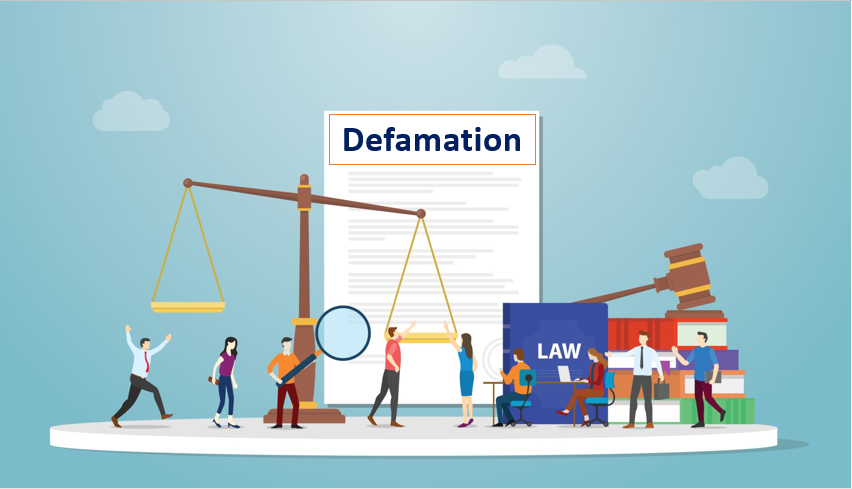Published on 14th April 2025
Authored By: Daniya Roshan Sayyed
Kanoria School of Law for Women
Introduction
Climate change, driven by human activities that release greenhouse gases (GHGs) into the atmosphere, is a pressing global issue with far-reaching consequences. Rising temperatures, extreme weather events, sea-level rise, and disruptions to ecosystems are just some of the impacts already being felt worldwide. Addressing this challenge requires a concerted effort at both the global and national levels, involving the development and implementation of effective laws and policies to mitigate GHG emissions and adapt to the changing climate.
This article explores the evolution of climate change laws and policies, examining the key international agreements and frameworks that have shaped the global response, as well as the diverse approaches adopted by nations in their efforts to combat climate change. It also highlights the challenges and opportunities in this field, emphasizing the need for continued innovation and cooperation to achieve a sustainable future.
Global Climate Change Framework
The foundation for international cooperation on climate change was laid in 1992 with the adoption of the United Nations Framework Convention on Climate Change (UNFCCC)[1]. This treaty established the ultimate objective of stabilizing GHG concentrations in the atmosphere at a level that would prevent dangerous anthropogenic interference with the climate system. It also recognized the principle of “common but differentiated responsibilities,” acknowledging that developed countries have historically contributed the most to GHG emissions and should take the lead in mitigation efforts.
The UNFCCC led to the Kyoto Protocol in 1997, which set binding emission reduction targets for developed countries. However, the Kyoto Protocol’s[2] effectiveness was limited by its exclusion of developing countries and its lack of enforcement mechanisms.
In 2015, the Paris Agreement[3] marked a significant turning point in global climate action. It set a long-term goal of keeping global temperature rise well below 2 degrees Celsius above preindustrial levels, with efforts to limit it to 1.5 degrees Celsius. The agreement also emphasized the importance of adaptation and provided a framework for financial and technological support to developing countries.
The Paris Agreement is based on nationally determined contributions (NDCs), which outline each country’s voluntary targets for emission reductions and adaptation measures. While the NDCs are not legally binding, they represent a commitment by each nation to contribute to the global effort.
National Climate Change Laws and Policies
In addition to the global framework, many countries have developed their own national climate change laws and policies. These vary widely in scope and ambition, reflecting different national circumstances and priorities.
Some countries have adopted comprehensive climate change legislation that sets legally binding emission reduction targets, establishes carbon pricing mechanisms, and promotes renewable energy and energy efficiency. Examples include the European Union’s Emissions Trading System (ETS) and the United Kingdom’s Climate Change Act.
Other countries have taken a more sectoral approach, focusing on specific areas such as transportation, energy, or agriculture. For instance, many countries have implemented policies to promote electric vehicles, invest in renewable energy infrastructure, or encourage sustainable land use practices.
In recent years, there has been a growing trend towards integrating climate change considerations into broader policy frameworks, such as sustainable development strategies and economic planning. This reflects the recognition that climate change is not just an environmental issue but also has significant social and economic implications.
Beyond the global framework, nations have adopted diverse approaches. Several stand out for their innovative and impactful policies:
European Union (EU): Emissions Trading System (ETS)[4]: The EU ETS is the world’s largest carbon market. It sets a cap on emissions from certain sectors, and companies can trade emission allowances. This market-based approach incentivizes emissions reductions and promotes cost-effective decarbonization. Its phased approach and expansion over time offer a valuable lesson for other regions.
- United Kingdom: Climate Change Act (2008)[5]: This Act established a legally binding target for emissions reductions and created a framework for carbon budgeting. It demonstrates the effectiveness of setting clear, long-term targets and establishing accountability mechanisms. The UK’s independent Climate Change Committee provides expert advice and monitors progress, enhancing transparency and credibility.
- Costa Rica: Focus on Renewable Energy[6]: Costa Rica has consistently generated over 98% of its electricity from renewable sources, primarily hydropower. This demonstrates the potential for countries to transition to a fully renewable energy system. Their approach, combining smart grid management with community engagement, offers a practical example for nations looking to decarbonize their energy sectors.
- Germany: Energiewende (Energy Transition)[7]: Germany’s Energiewende is a comprehensive policy aimed at shifting the country to a sustainable energy system. It involves phasing out nuclear power, promoting renewable energy, and increasing energy efficiency. While facing challenges, the Energiewende provides a valuable case study in managing a complex energy transition.
- Sweden: Carbon Tax: Sweden introduced a carbon tax in 1991, which has been instrumental in reducing its GHG emissions. The tax has been gradually increased over time, providing a strong incentive for businesses and individuals to reduce their carbon footprint. The revenue generated has been reinvested in green initiatives, further accelerating the transition.
- Denmark: Ambitious Renewable Energy Targets: Denmark has set highly ambitious targets for wind energy deployment, both onshore and offshore. Their long-term planning and clear regulatory framework have fostered a thriving wind energy industry, created jobs and driven innovation.
- Bhutan: Carbon Negative Nation: Bhutan is a unique example of a country that is carbon negative, meaning it absorbs more CO2 than it emits. This is largely due to its vast forests and its commitment to sustainable development. Bhutan’s approach demonstrates the importance of protecting natural ecosystems in the fight against climate change.
Challenges and Opportunities
Despite progress in developing climate change laws and policies, significant challenges remain. One of the main challenges is the need to accelerate the pace of emission reductions to meet the goals of the Paris Agreement. This requires greater ambition from all countries, as well as increased investment in clean technologies and sustainable infrastructure.
Another challenge is ensuring that climate action is equitable and just. This means taking into account the needs of vulnerable communities and ensuring that the transition to a low-carbon economy does not exacerbate existing inequalities.
However, there are also significant opportunities in the fight against climate change. The transition to a low-carbon economy can create new jobs, stimulate innovation, and improve public health. Investing in renewable energy and energy efficiency can also enhance energy security and reduce reliance on fossil fuels.
India’s Climate Change Policies and Initiatives
India, as a large and rapidly developing country, has a crucial role to play in the global fight against climate change. While India’s per capita emissions are still relatively low, its growing economy and population mean that its emissions are expected to increase in the coming years.
India has taken several steps to address climate change, including:
- National Action Plan on Climate Change (NAPCC): This plan outlines eight national missions on climate change, focusing on areas such as solar energy, energy efficiency, sustainable habitat, water conservation, and sustainable agriculture.
- Renewable Energy Promotion: India has set ambitious targets for renewable energy deployment, particularly solar and wind power. The country has also implemented policies to promote the use of renewable energy in various sectors.
Energy Efficiency Measures: India has implemented several programs to improve energy efficiency in industries, buildings, and appliances.
Forest Conservation and Afforestation: India has a strong focus on forest conservation and afforestation, recognizing the role of forests in absorbing carbon dioxide from the atmosphere.
- Climate Change Legislation: India has enacted several laws that have implications for climate change, such as the Environmental Protection Act, the Air (Prevention and Control of Pollution) Act, and the Energy Conservation Act.
- National Solar Mission:[8] As part of its NAPCC, India’s National Solar Mission has significantly expanded solar power capacity. Through a combination of policy support, financial incentives, and technological advancements, India has emerged as a major player in the global solar market. This showcases the potential of targeted policies to drive rapid growth in renewable energy in developing economies.
Challenges and Opportunities in India
India faces several challenges in its efforts to combat climate change, including:
- Balancing Development and Climate Action: India needs to balance its economic development goals with the need to reduce GHG emissions.
- Financing Climate Action: Implementing climate change policies and initiatives requires significant financial resources.
- Technological Development and Transfer: India needs access to clean technologies and financial support from developed countries to accelerate its transition to a lowcarbon economy.
- Vulnerability to Climate Change Impacts: India is highly vulnerable to the impacts of climate change, such as extreme weather events, sea-level rise, and changes in agricultural productivity.
Despite these challenges, there are also significant opportunities for India in the fight against climate change, including:
Clean Energy Transition: India has the potential to become a leader in the development and deployment of clean energy technologies.
Green Jobs: The transition to a low-carbon economy can create new jobs in areas such as renewable energy, energy efficiency, and sustainable agriculture.
- Sustainable Development: Addressing climate change can contribute to broader sustainable development goals, such as poverty reduction, improved public health, and environmental protection.
India, as a major developing country, has a crucial role to play in this effort. The country has taken several steps to address climate change, but it faces significant challenges in balancing its development goals with the need to reduce GHG emissions. However, there are also significant opportunities for India in the transition to a low-carbon economy.
Latest Case Laws and Judgments
In recent years, there has been a growing trend of climate change litigation around the world. These cases seek to hold governments and corporations accountable for their contributions to climate change and to compel them to take more ambitious action.
Some notable examples include:
- Urgenda Foundation v. State of the Netherlands (2019)[9][10]: The Dutch Supreme Court ruled that the Dutch government had a duty of care to protect its citizens from the impacts of climate change and ordered it to reduce emissions by at least 25% by 2020.
- Juliana v. United States (2015)10: A group of young people sued the US government for failing to take adequate action on climate change. The case is still ongoing.
- K. Ranjitsinh & Ors. v. Union of India & Ors. (2024)[11]: The Supreme Court of India recognized the right to be free from the adverse effects of climate change as a fundamental right and emphasized the need to balance conservation efforts with climate change mitigation.
Friends of the Irish Environment v. The Government of Ireland (2020):[12] The Irish Supreme Court quashed the government’s climate mitigation plan for lacking sufficient detail and ambition, setting a precedent for holding governments accountable for their climate commitments.
- ClientEarth v. Shell (2021)[13]: This case saw a Dutch court order Shell to significantly reduce its emissions, highlighting the increasing pressure on corporations to align their business practices with climate goals.
These cases, along with many others, demonstrate the growing importance of legal action in addressing climate change. They also highlight the potential for courts to play a key role in holding governments and corporations accountable and driving greater ambition on climate action.
Conclusion
Climate change is a complex and multifaceted challenge that requires a global and coordinated response. While progress has been made in developing climate change laws and policies, much more needs to be done to achieve the goals of the Paris Agreement and avert the worst impacts of climate change.
Addressing climate change requires a global and coordinated response. While international agreements provide the framework, national policies are crucial for implementation. By learning from best practices and fostering innovation, nations can accelerate the transition to a sustainable future. The increasing role of climate litigation further underscores the urgency and importance of effective climate action.
This requires continued innovation, cooperation, and ambition at both the global and national levels. It also requires a shift in mindset, recognizing that climate action is not just a cost but also an opportunity to build a more sustainable and prosperous future for all.
References
[1] United Nations Framework Convention on Climate Change, 1 May 9, 1992, S. Treaty Doc. No. 102-39, 1771 U.N.T.S. 107.
[2] Kyoto Protocol to the United Nations Framework Convention on Climate Change, Dec. 11, 1997, 2302 U.N.T.S. 118
[3] Paris Agreement, Dec. 12, 2015, T.I.A.S. No. 16-1104.
[4] https://www.google.com/search?q=https://ec.europa.eu/clima/eu–emissions–trading–system_en (last visited Feb. 19,2025)
[5] Climate Change Act 2008, c. 4.
[6] https://www.google.com/url?sa=E&source=gmail&q=https://www.ice.go.cr/ (Last visited Feb. 19, 2025)
[7] https://www.google.com/url?sa=E&source=gmail&q=https://www.bmwk.de/
[8] https://www.google.com/url?sa=E&source=gmail&q=https://mnre.gov.in/
[9] ECLI:NL: GHDHA:2018:2610
[10] F.3d 1159, 1167
[11] Writ Petition (Civil) No. 1132 of 2020 (India, 2024).
[12] [2020] IESC 49 (Ir.)
[13] ECLI:NL:RBDHA:2021:5591 (District Court of The Hague, May 26, 2021) (Neth.).


